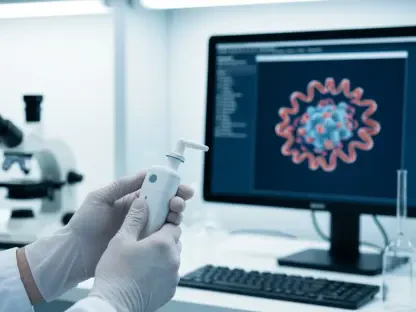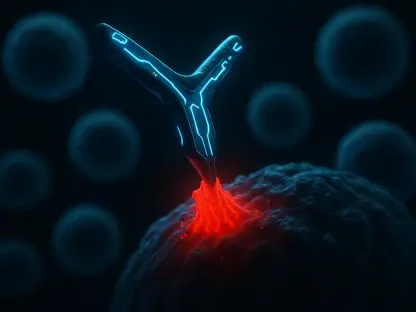Gauteng’s public healthcare system faces a monumental challenge with an astonishing diagnostic backlog, where over 3,500 patients are waiting for essential MRI scans due to equipment failures and staff shortages. Only eight MRI machines are available for the region’s vast population of approximately 12.5 million people who rely on public healthcare, undermining crucial diagnostic capabilities for conditions such as cancer, neurological disorders, and infections. Facilities like Charlotte Maxeke Johannesburg Academic Hospital, which alone has a waiting list of 2,347 patients, underscore the severity of the situation. While a recent equipment replacement in March has addressed frequent breakdowns, similar issues continue to impact other major hospitals, such as Dr. George Mukhari and Chris Hani Baragwanath Hospitals.
Increasing Demand on Limited Resources
Strain and Breakdown of Equipment
The demand for MRI scans has overwhelmed available resources, leading to extended waiting times. Frequent equipment breakdowns at major facilities like Charlotte Maxeke Johannesburg Academic Hospital have exacerbated this issue, with patients often waiting nearly a year for a scan. Despite a recent replacement of its MRI machine, the hospital continues to grapple with the volume of patients relying on its services. Similarly, Dr. George Mukhari Hospital and Chris Hani Baragwanath Hospital face significant diagnostic delays with waiting lists of 450 and 230 patients, respectively. The backlog is worsened by the scarcity of operational machines, highlighting an urgent need for substantial investment in maintaining existing equipment and expanding capacity to meet demand.
Efforts to modernize the MRI infrastructure have faced various hurdles, primarily due to the limited availability of machines and logistical challenges in maintaining them. The lag in service delivery at numerous public hospitals arises from an over-reliance on academic and tertiary facilities for referrals, leading to overburdened systems and delays. While the introduction of new diagnostic equipment is critical, ensuring existing machines are well-maintained is equally important. Addressing these mechanical issues requires a robust strategy of regular maintenance and timely interventions to guarantee continuous availability and functionality.
Staffing Shortages and Operational Hindrances
Staff shortages present a severe operational challenge, with many facilities lacking adequate personnel to handle the growing number of patients and maintain efficient operation of MRI services. These deficiencies lead to extended delays as those available struggle to manage high patient volumes under increased workloads. Training more technicians and specialists becomes essential not only to elevate service levels but also to ensure that quality is maintained across all centers. Without addressing this staffing gap, the effectiveness of additional MRI machines and updated infrastructures remains compromised, undercutting the ambition of alleviating current service burdens.
The complexity of managing MRI services extends beyond simply adding new machines; it entails a comprehensive approach inclusive of workforce expansion and capacity building. Emerging strategies involve both immediate relief measures and long-term planning to create a sustainable operation model. Collaborative efforts are necessary to increase visibility and attract more healthcare professionals into roles pivotal for running diagnostic services efficiently. By developing a robust network of trained professionals and efficient operational protocols, better management of patient inflow and equipment use can be achieved, ultimately reducing wait times.
Strategic Initiatives and Future Prospects
Pursuing Sustainable Solutions
Tackling the backlog requires a combination of technological advancements and strategic investment to create sustainable solutions. Focused efforts are directed toward installing modern machines alongside existing ones to cope with increasing patient numbers. Additionally, partnerships with manufacturers and technology firms aim to develop agreements promising reduced equipment downtime. Ensuring state-of-the-art diagnostic processes necessitates not only technological upgrades but also comprehensive support systems to maintain continuous operations. This strategic push is crucial, given the current strain on resources and facilities, to provide faster, more accessible healthcare for all.
Improving infrastructural support through better allocation and management of resources remains a central component of enhancing MRI service delivery. Utilizing predictive analytics and related technologies in scheduling and managing diagnostics optimizes machine use across departments. Besides this, incentives encouraging privatization or partnerships in operations serve to distribute the load fairly, mitigating the pressure experienced by government-funded centers. Leadership from health authorities is essential to secure commitments to these long-term strategic investments, facilitating a seamless integration of advanced technology within the existing network.
Equitable Access to Healthcare
Ensuring accessibility to timely diagnostic services is crucial in providing equitable healthcare for Gauteng’s entire population. This depends heavily on the installation of better diagnostic facilities in regional centers, reducing reliance on tertiary hospitals and allowing broader access. The establishment of equitable healthcare services involves a balanced approach to resource distribution, ensuring fair treatment access for all demographic groups within the public health system. Improved transparency in service allocation and communication between facilities enhances patient trust and satisfaction levels while reducing centralized service bottlenecks.
Balanced geographic distribution of diagnostic services can significantly diminish health disparities, delivering benefits well beyond immediate patient care. Implementing community outreach initiatives to educate the populace about available diagnostic services empowers individuals to seek timely care. Coupled with technological improvements and strategic planning focusing on sustainability, enhanced public consciousness of healthcare options contributes positively toward reducing delays. By committing to equity-focused approaches, the public health system can ensure broader access and better outcomes for patients confronting urgent healthcare needs.
Evolving Toward Efficiency
The demand for MRI scans has outstripped current resources, resulting in lengthy wait times for patients. Facilities like Charlotte Maxeke Johannesburg Academic Hospital suffer from frequent equipment failures, forcing patients to wait up to a year for necessary scans. Though the hospital recently obtained a new MRI machine, it still struggles to manage the patient load. Other hospitals, such as Dr. George Mukhari and Chris Hani Baragwanath, also endure long waits, with queues of 450 and 230 patients, respectively. This backlog is exacerbated by the shortage of operational machines, signaling a crucial need for investments in both maintaining current equipment and expanding capacity to accommodate rising demand.
Efforts to update the MRI infrastructure are hampered by a scarcity of machines and logistical issues in upkeep. Service delays at public hospitals stem from a dependence on academic centers for referrals, overwhelming systems. Introducing new machines is vital, yet maintaining existing ones is equally critical. A comprehensive maintenance strategy is needed to ensure machines stay functional and readily available.









